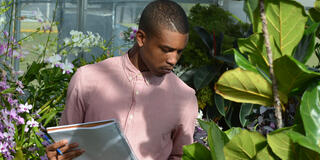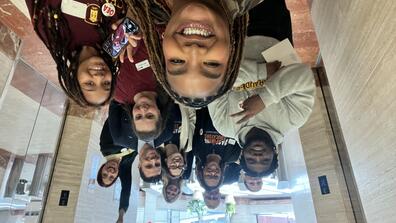A USDA Grant Helps CSU Fight Hunger and Promote Sustainably

Could hemp be a more sustainable way to nourish farm-raised fish? Funded by a $10 million U.S. Department of Agriculture grant, Central State University researchers are working with other schools to find out — and to address food inequities across the country.
Fish and fish oil are extremely nutritious, but unfortunately, many aspects of fish farming aren’t very sustainable. A Central State research team led by Dr. Brandy Phipps, an assistant professor in the Department of Agricultural and Life Sciences, is exploring how hemp could be used as a safe, environmentally friendly food additive for farm-raised fish.
‘How do we feed our people in a way that doesn’t destroy the planet and that people can afford?’
If the theory behind their cutting-edge research is borne out, hemp cultivation could be an economic engine and improve human health.
Providing Workforce Training
Colloquially known as SUSHI — Sustainable Use of a Safe Hemp Ingredient — the research effort is also designed to provide workforce training to increase the representation of Native American and African American graduates in agriculture.
The research is being carried out by a team of researchers from across Central State departments as well as other institutions of higher learning, including other historically black and land-grant colleges as well as the College of Menominee Nation, which will develop a pilot aquaponics program so Tribal members can learn about aquaculture.
Addressing Inequity in a Sustainable Way
The hope is that using hemp as a nutritionally rich food additive could help reduce food inequities, particularly in historically underserved communities. At the same time, it would “build meaningful and relevant outreach and agriculture development programs that build on existing desires and community efforts toward food sovereignty,” Dr. Phipps said.
“To sustainably impact public health outcomes, we must holistically address longstanding issues of food and health inequities,” Dr. Phipps noted. Doing that, she added, means “partnering with communities — especially those that have been historically underserved.”
Ultimately, Dr. Phipps said, the project is about making sure “that we can feed the rapidly growing population on this planet in ways that contribute the least to climate change and are affordable and accessible to everybody.” She added, “How do we feed our people in a way that doesn’t destroy the planet and that people can afford? We try to touch on all of that.”


